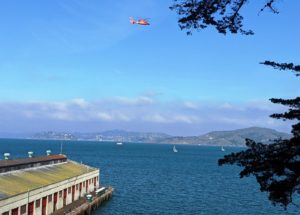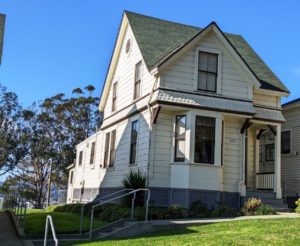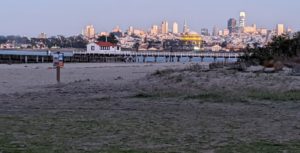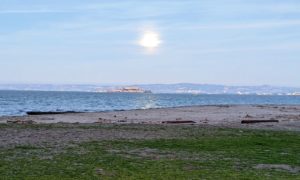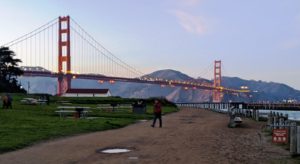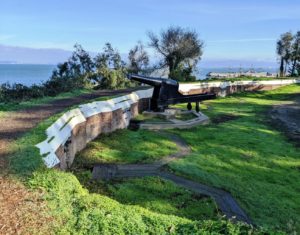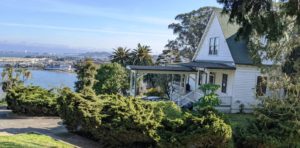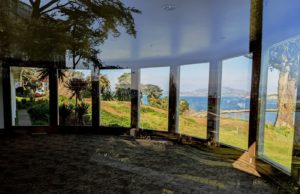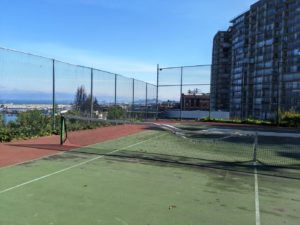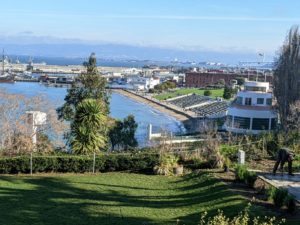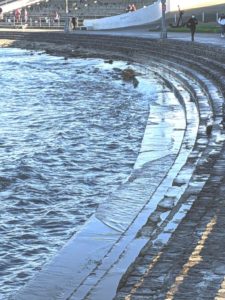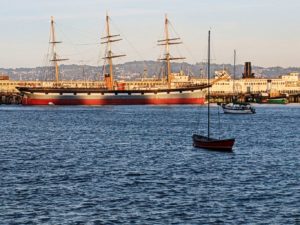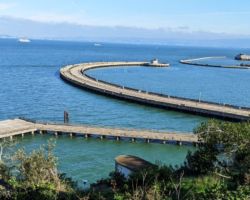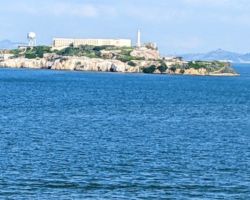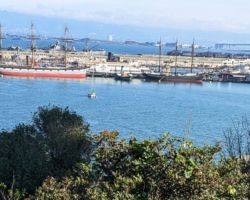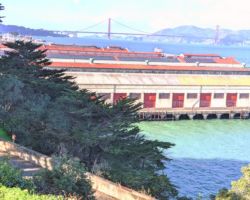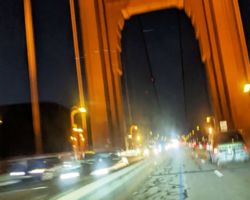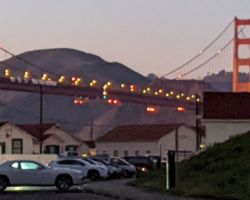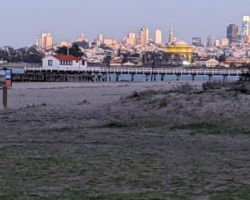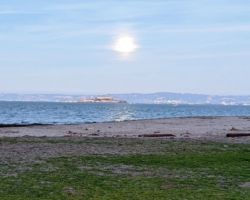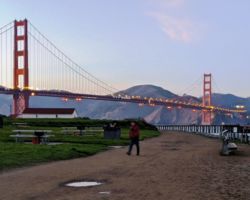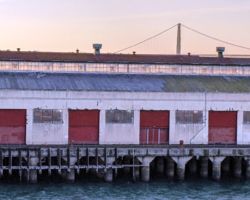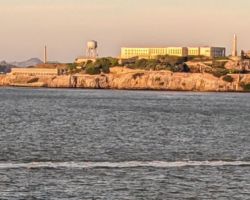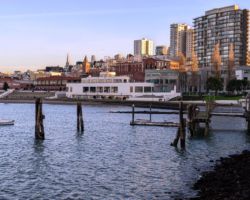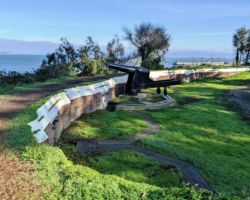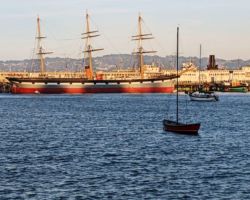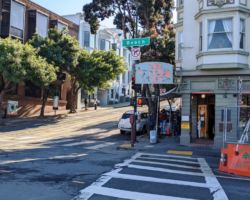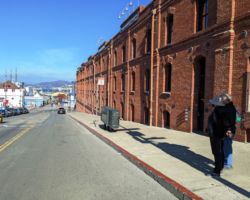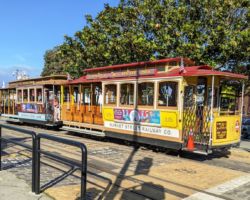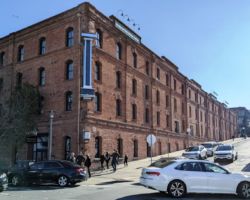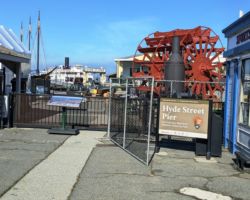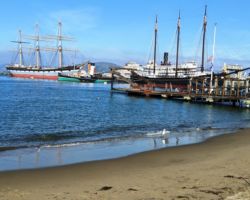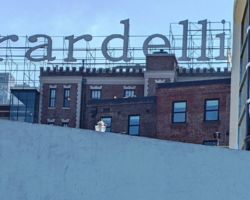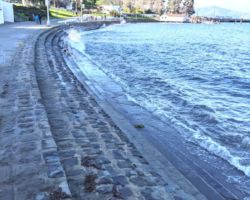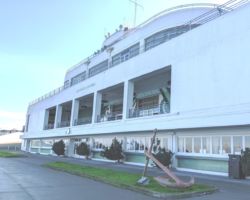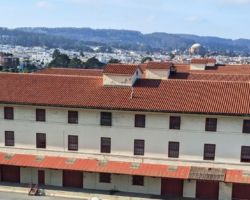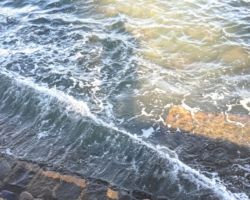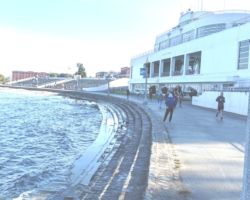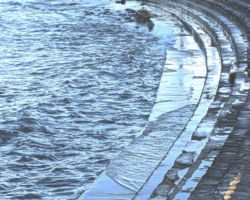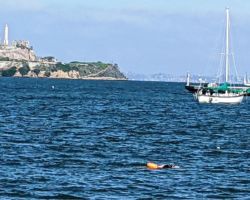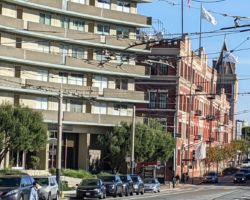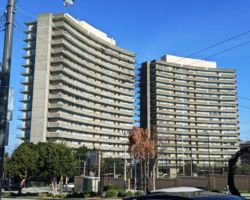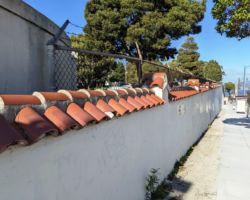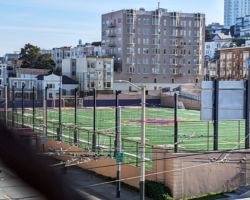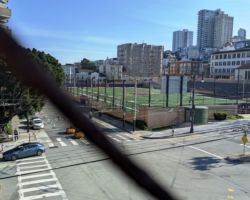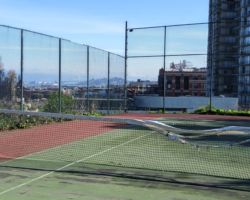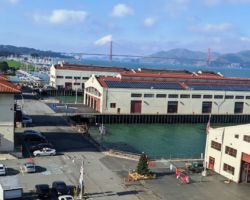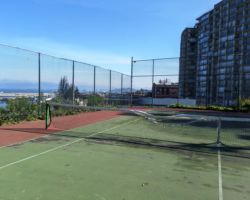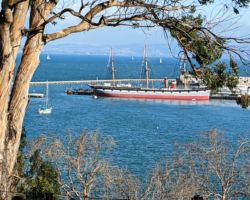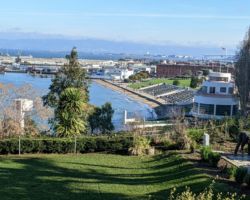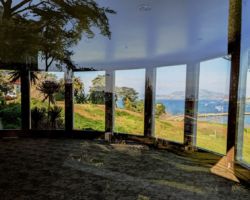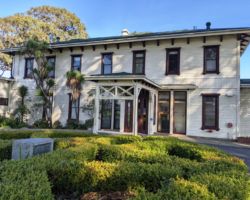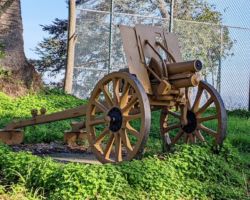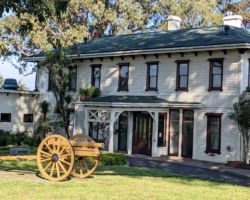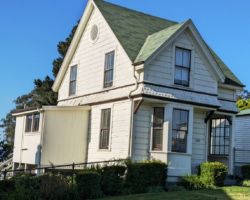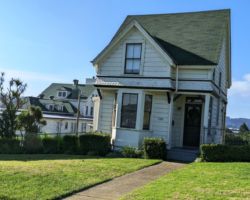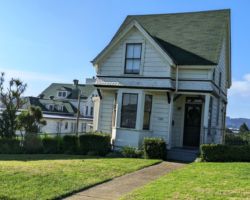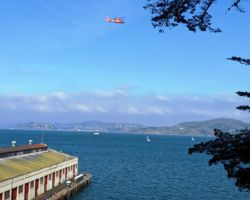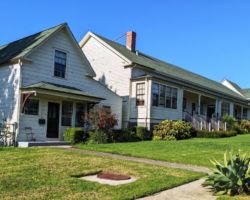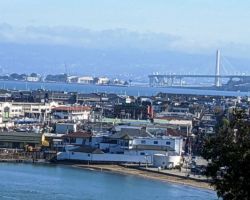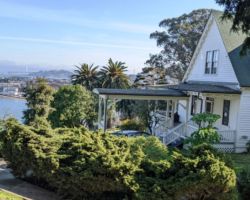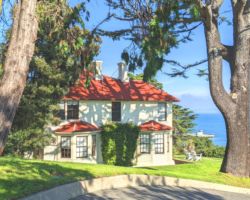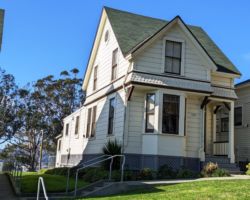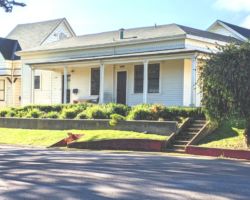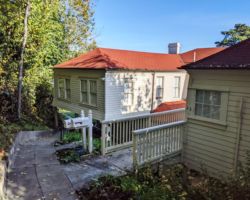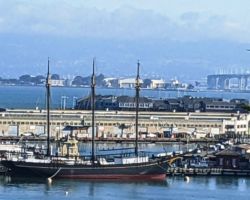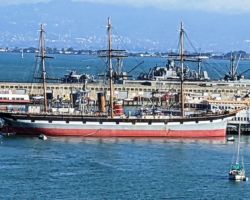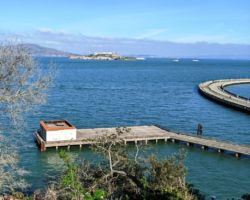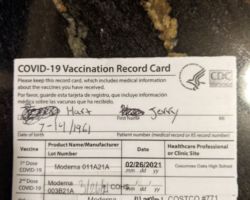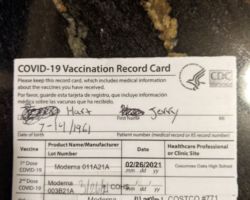
The City By the Bay: My Home Town
Trip Date: December 18, 2021
My folks and my older siblings spent time in the Marina on Steiner Street and later on Laguna Street across from Moscone Park, formerly known as Funston. I did my growing up at 19th and Ulloa, after being born at St. Mary’s on Stanyan, where my mom graduated worked as an RN for several years, before going to Seafarers’ Medical Center on 3rd and Harrison, and ultimately at the SF State Student Health Center.
I was lucky enough to go to St. Cecilia’s grammar School, like all my siblings and all my mom’s siblings. I went on the SI, like my siblings and my dad, while my mom’s brothers all went to SH. At SI, I made a lot of real good friends and have stayed in touch, even though mostly now through an annual Christmas card, with a handful of guys. One of them is Mark Harvey, and as usual, he invited me to their annual Christmas lunch, attended by mostly St. Stevens guys.
It is amazing to me that so many City guys still stay in touch. This group of St. Stevens guys goes all the way back to grammar school, 50 years now. They have traveled abroad together, attended each others weddings, and countless kids events. It is so amazing and wonderful to have that connection over so many years with a great group of guys. Another group is the OLM guys who do very much the same thing. Family vacations, annual gatherings, golf, fantasy football, all those types of things that bring people together they have been doing as a group for 50 years already. It truly is a gift.
So, when Mark reached out this year, I decided I wanted to go, even though I almost never to into the City anymore. Despite all the history and connections, so much has changed and I find myself more melancholy than excited. This year though I felt different. Despite going to Hawaii after Thanksgiving, Kristen and I were in pretty good shape for Christmas. The tree and decorations were up. Presents had come and it felt like I could be away for a day without any disruption to the plans and events. I confirmed with Mark and set out for my adventure.
My goal was to get into the City by 9:00 am and have a few hours to explore before lunch. I wasn’t sure if I wanted to go out West and look around at our old houses, schools, parks and such, maybe eat breakfast at Loui’s or Beach Chalet, walk Land’s End and Sutro Park or just head into the touristy Ghirardelli Square area. Since I was a little concerned about parking in that area on a Saturday around Christmas time, I opted for getting to where I needed to be. I was parking at 9:02.
The drive down was super easy and void of traffic or accidents. It set the tone for the entire day. I decided to park at the far end of Crissy Field across from the bookstore and café. I tried to pay for parking at at least 4 parking stations, however, although each one said you could prepay, none would let me pay for parking at 9:05 when it didn’t require payment until 10:00. I should have used my time more wisely, such as going up to the café and getting some grub, but I had picked up a burrito before I left and I was stuffed.
I was pleased to have gotten settled so early, so I listened to NPR and read stuff on my phone while I waited for 10:00 am to arrive. It was also great people watching. After placing my receipt on the dash, I gathered my belongings and headed out. I made it about 20 feet when I decided I should wear everything I brought with me, despite my initial analysis of only needing my sweater to get through the morning until it warmed up after lunch. This approach was possible, but it would be a painful morning. I felt much better bundled up in my heavier jacket as I crossed over the West Bluff lawn and got onto the Bay Trail walking path.
Being right on the water of the bay, it was cold. The sky was mostly overcast, but spots of blue were visible and the sky was not at all threatening. A slight breeze was noticeable from time to time, but otherwise, there was no wind or steady breeze. It definitely was damp and most walkers carried hot coffee. I’m not sure of the numbers, but walkers (including dogs), joggers, and bike riders were each about a third of the significant traffic on the paths, streets, and roads. I stayed as close to the water as possible with both suited me and cut down on fellow adventurers.
I had difficulty imagining what the areas would have been like pre-Eurotrash, when it was a huge marsh and the birthplace of many native Ohlone Indians. It was a common landing point for early Russian and Spanish ships. The Army took control of the Presidio in 1846 and along with it, Crissy Field. Of course, they used the area as a dump and eventually filled all the garbage over with dirt and fill. It was the site of the 1915 Panama Pacific International Exposition. In July 1918 Congress passed Public Law 189 to establish eight “air coast defense stations” and appropriated $1.5 million for the construction of one of them at the Presidio, to protect San Francisco Bay. The site of the Expo was chosen because it was already a flat open, well protected site, it allowed easy access to the bay for the seaplanes, and the infield of the Expo racetrack was already being used as an airfield.
The facility was named “Crissy Field” in memory of Major Dana H. Crissy, the base commander of Mather Field, California. Crissy and his observer died on 8 October 1919 in the crash of their de Havilland DH-4B while attempting a landing at Salt Lake City, Utah, during a 61-airplane “transcontinental reliability and endurance test” conducted by the Air Service from the Presidio’s field and Roosevelt Field, New York.
The Army took control in 1921, and in the early years, Crissy Field involved mainly the viewing of artillery fire, aerial photography, liaison flights for headquarter personnel, special civilian missions such as publicity flights and search and rescues, and a support field for U.S. Air Mail. The first Western aerial forest fire patrols took place from Crissy Field.
The first successful dawn-to-dusk transcontinental flight across the United States ended at Crissy Field in June 1924. That same year, the army’s first aerial circumnavigation of the world stopped at Crissy Field, and Lowell H. Smith, who was stationed at the field, led the flyers upon their return. In 1925, two Navy flying boats led by Commander John Rodgers took off from Crissy Field, marking the first attempt to fly from the continental United States to Hawaii. The flight was expected to take 26-hours, but it took twelve days when the PN-9 ran out of fuel short of land, and crew and aircraft had to be rescued at sea.
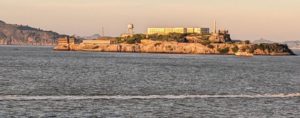
Two years later Air Corps Lieutenants Lester Maitland and Albert Hegenberger flew non-stop to Hawaii in the Bird of Paradise, a specially modified transport plane, after staging at Crissy Field. While possessing a storied place in history, times were changing quickly and the short runway soon proved inadequate for larger, more heavily laden planes. In 1936, Hamilton Field opened in Marin County, and while Crissy Field ceased to be a first-line air base, air operations continued until the 1970s.
As part of a national reduction in the number of functioning military bases, the Army decommissioned the Presidio in 1994, leaving Crissy Field “a jumble of asphalt and forsaken buildings” in the hands of the National Park Service. NPS eventually worked with the Golden Gate National Parks Conservancy to revitalize the area and the Crissy Field Center was opened to the public in 2001. The Crissy Field of today is a heavily used urban park with climbing wall gym, trampoline park, brewery, bike rentals, classrooms for community classes, youth education programs, summer camps, the arts, and environmental protection agencies, all mingled into the a wonderful slice of San Francisco history.
I wandered over by the Fort Point Life Saving Station of the US Coast Guard, which includes the Officer in Charge Quarters (built in 1890), Lifeboat Station (built in 1915), and Pier & Tide Gauge Station (built by 1935). Their pier still sticks out into the bay to the boathouse. These buildings are now occupied by the Greater Farallones National Marine Sanctuary. Between the Warming Hut and the St. Francis Yacht Club, these are the only structures on the bay. The rest are on the other side of Crissy Field along Mason street or behind them, further inland.
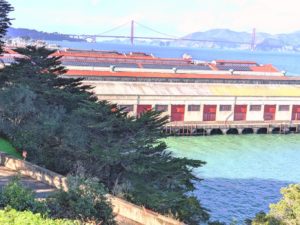
Walking over the little bridge across the inlet channel from the bay that fills the little marshland, I did get a small sense of what the entire area may have looked like pre-European encroachment. Although, I was even more taken aback by the tiny stream seeming to be coming from the bay. I wondered if there were any creeks or springs up in the Presidio that may have, or perhaps still do, feed into the bay. There is a Dragonfly Creek identified on Google Earth South of 101 and West of Veterans Blvd., near the nursery and Fort Scott tennis courts, but it doesn’t show it flowing all the way to the Bay. Apparently, there were several fresh water spring that fed three primary creeks that all flowed through Tennessee Hollow and into Crissy Marsh.
Tennessee Hollow was once a patchwork of streams and seasonal wetlands, grasslands, coastal scrub, and shifting sand dunes. The first people to drink its waters were likely the Yelamu Ohlone, whose seasonal camps have been discovered nearby at Crissy Field. After the Spanish arrived in 1776 and established the Presidio at what is now known as the Main Post, the valley was grazed by cattle. Three decades later, a colonial settlement made up of Spanish, Mexican, and Native American families formed around El Polín Spring, which was occupied from 1812 through the 1850s. Its most famous resident was Juana Briones.
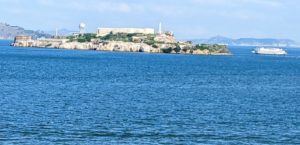
After the U.S. Army took over the Presidio in 1846, it planted cypress and eucalyptus and moved the creeks into dams and underground channels to make room for a growing military. Tennessee Hollow was named in 1898 to honor the 1st Tennessee Regiment, volunteer soldiers who camped here before shipping out to the Philippines for the Spanish-American War. The watershed later served as temporary housing for San Franciscans after the 1906 earthquake. By the 1930s, neighborhoods had sprung up, and in the 1960s apartment buildings arrived when the U.S. Army expanded during the Cold War. As a result, only small pockets of riparian habitat remain, with the exception of El Polin Spring.
As I got to the end of Crissy Field by the St. Francis Yacht Club, I was interested in checking out the new Wave Organ, which I knew was nearby because of the parking lot signs, however, I got distracted by the people dunking in the bay at Loki Cove. The air was still cold and breezy, and I bet the water was freezing, but this couple kept going back in the water and dunking and splashing around and laughing and squealing. It was fun to watch. I veered inland, passing the Dynamo Donut and Coffee kiosk, perched right on the edge of the marina. I picked up the San Francisco Bay Trail, staying on the North side of the Marina Green along the Bay. I passed the East Harbor at Gashouse Cove where Reinhard has his sail boat. What a fantastic thing to have in a spectacular spot.
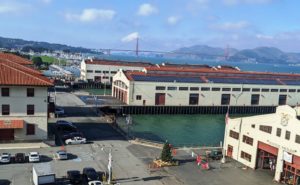
I passed Equator Coffees and headed up the hill through the Great Meadow where I remembered going to a concert in about 1975. I have no idea who was playing but it could have been any number of famous SF based bands, thriving at that time. The entire morning thus far had been perfect. The drive, parking, walking, seeing everything I had already experienced, but for me, this was the main event. I new about Fort Mason, and had been here a few times, but somehow knew there was much more than I had seen. I was excited to spend some time here and walk around and really explore a bit. This was the first place I started taking pictures.
The path led up a hill right on the water overlooking the Fort Mason Center for Arts and Culture and its three piers jutting out into the Bay. I had a million memories streaming through my mind, but certainly one that stood out was when Johnny Pechal and I drove the big rental truck down from Sacramento to set up a recycled product exhibit for the San Francisco Landscape & Garden Show circa 1997. I remember the ride being extremely rough and bumpy going down I-80 and pulling over to check out the tires and such. Then, somehow, we ate at a cool restaurant on the Delta off highway 4. I believe it was the Union Point Marina Bar & Grill, but I haven’t been back and can’t be sure.
A little further up on top of the hill is Black Point Battery, and this was the beginning of a fantastic little voyage back into a unique slice of San Francisco and California history. This one little area is packed with history. Ownership of this unique plot of S.F. land has a controversial history. The land was originally occupied seasonally by the Ohlone people, then taken over by the Spanish, then Mexico and finally the U.S., all using it as a military post to protect the Bay from its commanding promontory.
One of S.F.’s earliest private developers saw an opportunity to build homes on the bluff in the 1850s, even if it wasn’t technically his land. He built five homes there, squatting on the unused land that was then owned by the U.S. military. An avid U.S. explorer, and eventually one of California’s first senators, John C. Fremont and his wife Jessie Benton Fremont had just made their way out west and decided to occupy one of the homes between 1860 and 1861, though the exact home they lived in was one that was removed once the area became a battery years later.
Jessie Fremont is credited with starting the Black Point Gardens that have recently been restored and now are open to the public. The plants, shrubs, and trees frame gorgeous vistas over the bay, Alcatraz, and Aquatic Park. Narrow concrete paths and steep staircases lead up and down and all around this tiny, but fascinating point, with subterranean rooms, secret passageways, and even a train tunnel, built for the Panama Pacific International Expo in 1915, that helped shuttle goods shipped into San Francisco from the piers down by the Ferry building to the Exposition grounds on Crissy Field.
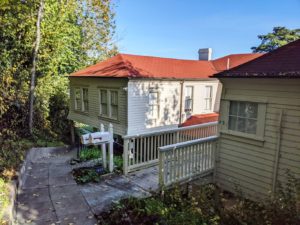 The Fremont’s neighbors included a community of educated, well-to-do private citizens, also illegally occupying the homes at Black Point. And they were all abolitionists, committed to ending slavery in the US. This fact led to n infamous duel between California Senator and “Free Soiler” Democrat David Broderick and former friend and one-time Chief Justice of the California Supreme Court, David Terry.
The Fremont’s neighbors included a community of educated, well-to-do private citizens, also illegally occupying the homes at Black Point. And they were all abolitionists, committed to ending slavery in the US. This fact led to n infamous duel between California Senator and “Free Soiler” Democrat David Broderick and former friend and one-time Chief Justice of the California Supreme Court, David Terry.
The area had several signs hinting at the history of this lone hill, but no number of signs could do justice to this spot. It is worth digging deeper into.
Past the Youth Hostel and Café Franco, sit 2 magnificent homes, Residences 2, 3 (Haskell House) and 4, perched on the East side of the hill with breathtaking views of the bay, Alcatraz, Aquatic Park, Hyde Street Pier, the East Bay, Treasure Island, and the Bay Bridge. Across the street are several more residences, all well-maintained from the mid 1850’s. Finally, I came to the Officer’s Club.
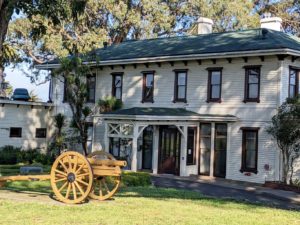
The officer’s club at Fort Mason is one of the most historic buildings in the city. Parts of the structure date back to houses built on the site by civilians in the 1850s. The area was taken over by the Army in 1865. For years, what is now the officers club was the home of the senior army officer on the Pacific Coast. A total of 44 generals, including several noted Civil War officers, lived there. Presidents Rutherford Hayes and Ulysses Grant were entertained there. “It has probably housed more illustrious residents than any other single house in San Francisco,” said National Park Service historian Gordon Chappel.
One illustrious resident it entertained was my sister who had her wedding reception there. I was lucky enough to be invited although I don’t remember much about it other than being thrilled with the building and lit location. It was a fabulous family event in San Francisco and one that has gained relevance as the years go by. I believe we were able to get the place because her husband at the time, Dan Summerville, was a diesel engineer in the merchant marines. That had to be 35 years ago; 1985 ish. I do remember being impressed, not just with the building and the beautiful interior, but the grounds, and trees, and general location.
I was poking around, looking through the windows, and noticed the side gate was open. I slinked back there and was granted access to the back and the fantastic curved glass wall in the back overlooking Aquatic Park and the National Maritime Historic Park. I noticed the park service guy working on an electrical panel, but he either didn’t see me or didn’t seem to mind. It was a cool glimpse of a place not well known or accessible. I followed the narrow paths past the old cannon and over to the dilapidated tennis court. It was odd to see a tennis court here, but could imagine its popularity with the military officers back in the day. Now it was sadly out of place and in a sad state of affairs.
Past the tennis court was a short distance to the Southeast gate and out onto Bay street, then a quick turn onto Van Ness. This is where I had originally envisioned parking before I decided to walk from Crissy Field. I was glad I changed my mind, because most of the parking spaces were blocked by construction. At the very end of Van Ness, I came back to the path I had been on from the Marina Green and the Great Meadow on the West side of Fort Mason. It all ends at the Bay at Aquatic Park, with Muni Pier, an old firehouse, and the Sea Scout Base. It is a very cool nook of the City.
I strolled past the Maritime Museum, and although I recall only being inside once, I have fond memories of the ship models and exhibits. I passed the bleachers where I still have vivid memories of hearing a collection of 30 or more random drummers playing congas, bongos, tumbadoras, cajons, tamboras, and bleneras and all sorts of percussion instruments, traditional and improvised, on Sunday mornings who all gathered and played together just for fun and for the vibe. I can still feel it today.
Past the Dolphin Club, the Rowing Club, and Hyde Street Pier, I turned up Hyde street past the Argonaut Hotel and on up to the cable car turnaround and the Buena Vista, known for decades for its Irish Coffees. I walked along the gardens on Beach street where me and Pat Needham used to come to buy or permanently borrow crafts from the street vendors. I remember an altercation with a group of punks down there that rattled my rather quiet and gentle childhood. Then it was up to Ghirardelli Square to meet Mark and Dave and the rest of the guys for lunch at McCormick & Kuleto’s. I was still a few minutes early so I scooted into the chocolate factory for some Christmas chocolates to take home. By then, Andy, Bob, and 3 other guys that I just met had arrived and we had a great lunch. We walked over to the Buena Vista, but there was a huge line, so we wandered back to the SF Brewing Company and had a few beers and played shuffle board. Andy invited me to meet another crew that was gathering for dinner that night, but it was already later than I had intended to stay and going to another event, even to simply say hello would have been another hour or more, and by then it would be hard to say a quick goodbye and head, so I said goodbye to Mark and Dave and escaped.
I had a great walk back to the car as the dusk gathered and turned to night. The lights were coming on and the evening mood was changing. Still, tons of people were out and about, enjoying a fabulous day in a great part of the City. The day was better than I could have imagined. All the logistics worked out, seeing the guys was awesome, food and beverages were great, exploring was great, and the whole experience was more than I had imagined. Thanks for the invite Mark. Here’s to your health!
